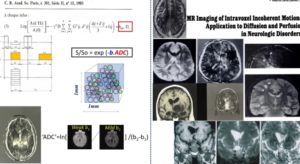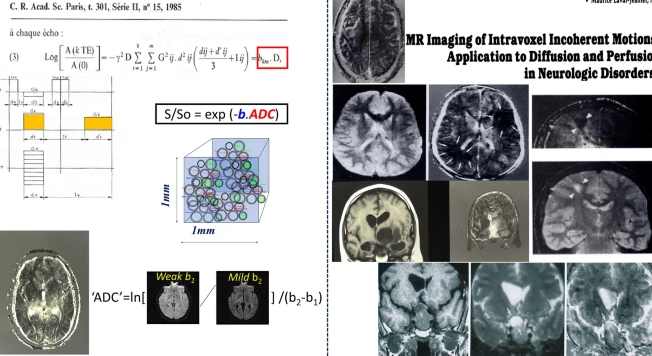Diffusion MRI for Neurosurgical Practice: Improvement of Surgical Outcome and Accuracy
Diffusion MRI is one of the fastest-moving areas in neurosurgery. This new imaging technique enables the surgeon to visualize structures and pathways in the brain more clearly than conventional MRI. It allows more precise planning and accomplishment of surgical procedures by providing minute details about white matter tracts.
This technology offers insight, critical to neurosurgeons in improving outcomes in patients, and will be accorded as they use this. It helps in the localization of important areas of the brain, hence minimizing the risks and enhancing effectiveness during neurosurgical procedures. Capabilities like these make diffusion MRI stand as a prized armamentarium in modern surgical practice.
Key Takeaways
- Diffusion MRI gives clear images of structures and pathways of the brain.
- It enhances surgical planning and reduces risks during operations.
- This makes the technique an essential component of neurosurgery, crucial to the optimization of patient outcome.
Basics of Diffusion MRI in Neurosurgery
Diffusion MRI is one of the basic neurosurgical tools. Diffusion MRI allows an insight into the integrity of the brain structure and aids surgical planning. Its concept and involved technology need to be understood in order to avoid application errors in clinical practice.
Principles of Diffusion MRI
In this case, diffusion MRI measures the movement of water molecules in the brain tissue. This imaging modality relies on the independent motion of water molecules to deliver images. Where the water diffuses in various directions, that means diverse structures of tissues.
In the brain, diffusion is cell density and integrity dependent. For example, areas of intact tissue have free motion. On the other hand, injured areas restrict the motion of molecules, thereby yielding contrast on MRI images. With the ability to visualize pathways, for example tracts of white matter, the clinician can better appreciate the connectivity of brain functions. Such imaging is useful in tumor delineation and surgical planning.
Hardware and Software Requirements
The hardware requirements for diffusion MRI involve a powerful MRI and coils. Most machines currently in use operate between 1.5 to 3 Tesla strength. The higher the field, the greater resolution is obtained but may require using more advanced protocols.
Software plays an equally important role. It takes the acquired images to visualize diffusion data. Some software packages like DTI analyze the direction of diffusion.
Some of the capability requirements in the software are as follows:
3D modeling: It is the preparation of detailed maps of the brain.
Quantitative analysis: It allows for the measurement of the exact rate and change of diffusion.
Integration: It integrates the diffusion data with other imaging techniques to provide a comprehensive view.
Hardware and software: together, they form the backbone of diffusion MRI in neurosurgical practice.
Neurosurgery Applications
Diffusion MRI enjoys a wide range of applications in neurosurgery. It aids neurosurgeons in mapping brain connectivity, tumor localization, and the identification of risks pre-, intra-, and post-operatively.
Preoperative Planning
Diffusion MRI before surgery allows the mapping of brain structures. It provides images that delineate white matter tracts, which map out pathways connecting various regions of the brain. This information is crucial when one is planning safe surgery.
This is how surgeons know where they cannot go so it protects walking and talking and other important functions by using the diffusion MRI findings together with other types of imaging to create a comprehensive surgical roadmap. The more knowledge, the better the results are for the patients.
Intraoperative Guidance
In this manner, diffusion MRI could also be used intraoperatively to provide guidance in real-time. In these scenarios, surgeons could use intraoperative MRI software to actually visualize live images of the brain’s connections while operating. This ability enables them to make immediate decisions.
This gives them the ability to change their approach based on real-time imaging information. Such freedom may help the surgeon’s ability to remove the tumor while causing minimal damage to the healthy tissue that surrounds the site of the tumor. Advantages include increased safety as well as accuracy.
Postoperative Evaluation
Diffusion MRI also helps in assessing surgical outcomes. It may indicate the changes in connectivity of the brain and point out the complications such as areas of new damage or swelling. This assessment keeps the medical team abeam with the patient’s recovery.
Physicians are able to observe the trend and extent to which the brain clears its functions. In this regard, one is able to institute early interventions when things are going against expectations. Assessment of this nature is important for rehabilitation therapy planning and subsequent care.
Risk Assessment and Prognostication
It also helps in the assessment of risks and prediction of surgical outcomes. After analyzing the specific areas of the brain, the doctors are able to give a prognosis of the possibility of complications. Some findings may necessitate a high risk for complications such as infection or impaired post-surgical function.
It identifies these risks a lot earlier; thus, better preparation and management methods can be developed. It improves the communication between the surgical team and patients. This enables the person to make informed decisions in treatment matters because he or she knows everything in detail.

Also Read :
